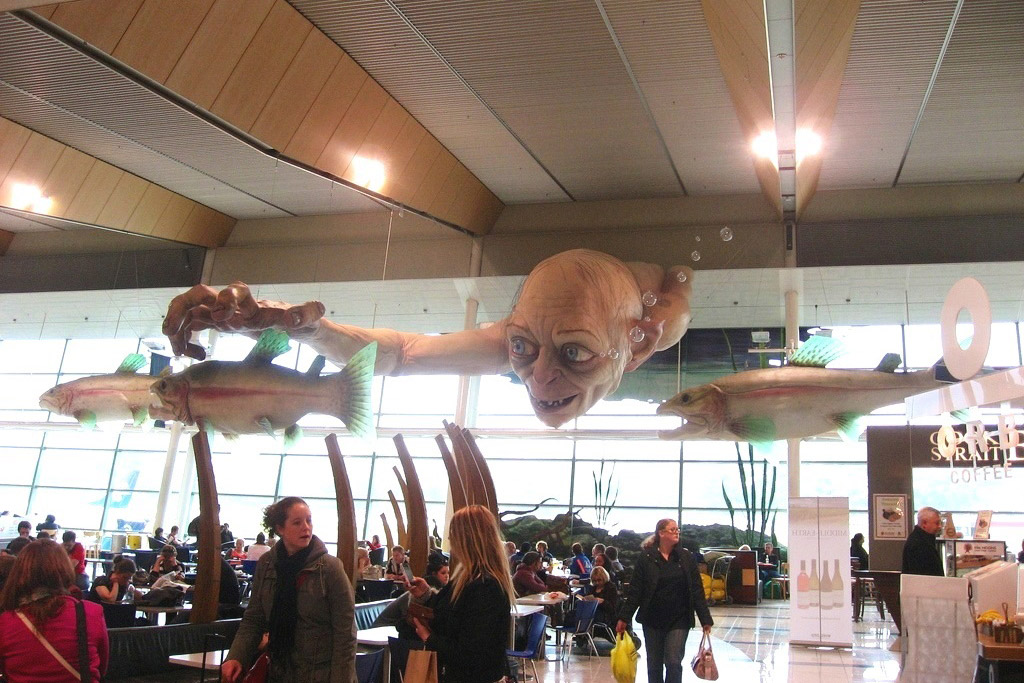
You might also like:
New Zealand farmer Ian Diprose used to count on the dairy industry for most of his income. Today, he relies on tourism.
As plunging milk prices push dairy farms into the red and hurt rural businesses, Diprose and wife Joy are making more money accommodating tourists than other farmers’ cows. That’s because their grazing property in Waikato, New Zealand’s dairying heartland, is about 16 kilometers (10 miles) from Hobbiton, a life-sized imitation of Bilbo Baggins’ Shire created for Peter Jackson’s Lord of the Rings and Hobbit movies.
“A lot of the people who come through here are Hobbiton- crazy,” said Diprose, 73, whose De Preaux Lodgein Matamata offers bed, breakfast, a home-cooked meal and an authentic New Zealand farm experience for NZ$175 ($120) a night. “In our little town, we have something like 30 cafes or places to eat because of the tourists coming through.”
The Diproses started offering accommodation five years ago as a hobby to augment income from agisting cattle. Today, it’s their main business. Four out of five dairy farmers in New Zealand, the world’s biggest dairy exporter, will operate at a loss this season as the global slump in milk prices enters its third year, according to the central bank. That’s curbing farmers’ spending and damping economic growth, even as a tourism boom helps to soften the blow.
‘Crippling’ Impact
“I’ve reduced my grazing prices to one of my customers quite drastically because she’s a young farmer and I know she’s struggling,” said Diprose, who has two sons dairying. “The impact it’s having on them is crippling. The financial situation of the dairy farmers, I weigh that up every day in my heart.”
As farmers tighten their belts, demand for fertilizer to veterinary services has fallen, and retailers in rural towns are feeling the pinch.
At Giltrap AgriZone Ltd., which sells hay balers and tractors at three outlets around Waikato, sales are down 30 percent from a year ago, said Managing Director Andrew Giltrap. “We’re on a roller coaster and we just have to ride it out,” he said.
Milk Over Wool
New Zealand, once known as the country with 10 times more sheep than people, has stepped up investment in dairy farming in the past decade. The nation now boasts 5 million cows, more than its 4.5 million human population, while sheep numbers have declined 26 percent since 2006 to 29.5 million.
The strategy made sense when milk prices surged to a record in 2007 and neared that peak again in 2013. Since then, a global oversupply and waning demand for milk powder from a slumping China have seen prices crash. With plunging oil prices now sapping milk purchases by Russia and other energy-producing nations, dairy prices are approaching the 12-year low they hit in August.
Auckland-based Fonterra Cooperative Group Ltd. almost halved payments to its 10,500 farmer-suppliers in New Zealand in the season ended May 2015. Last month, the maker of Anmum infant milk formula and Mainland cheese forecast this season’s payment will drop to a nine-year low. Payouts probably won’t recover significantly next season either, economists say.
Quitting Cows
Farmers have responded by reducing the size of their herds and buying less supplementary feed for their cows. That may lower the nation’s milk output by 6 percent in the year ending May 31, according to Fonterra. The number of cows slaughtered increased 26 percent in the year ended September, government figures show.
Mat Hocken, who milks 1,000 cows in the lower North Island, said the failure of dairy export competitors, such as the European Union, to reduce supply is prolonging the global milk glut.
“New Zealand dairy farmers are very attuned to global dairy prices — as the market price has dropped, our supply has dropped,” said Hocken, who spent five years in Brussels as a consultant specializing in EU policy. “You don’t see that in other countries, where potentially you’ve got other mechanisms gumming up those signals. So we want to see international trade liberalization and reduction of tariffs continue.”
Less dairy production from farms and factories, together with reduced farmer spending, is curbing New Zealand’s economic expansion. The central bank forecasts growth slowed to 1.9 percent in 2015 from 3.5 percent in 2014. Dairy exports, which make up a quarter of the nation’s overseas sales, fell 21 percent last year.
Things would be a lot worse if it wasn’t for a booming tourism industry, which last year overtook dairy as New Zealand’s biggest foreign-exchange earner.
Hobbit Fever
Russell Alexander, part-owner and general manager of Hobbiton, estimates business has surged 40 percent from a year ago to 2,000 visitors a day. Tours of the movie set start at NZ$79 for adults.
“We’ve hit capacity this summer and we’ve turned people away for the first time,” he said. “I think it’s helping a bit in Matamata, but if you’re in dairy or a dairy-related business, you’re going to be suffering.”
For Raymond Watkins, a dairy farmer near Piopio, 114 kilometers south of Hobbiton and 42 kilometers from the popular Waitomo Glowworm Caves, the extra cash he earns from his Waitui farmstay is welcome, but doesn’t come close to compensating for the low milk price.
“I don’t think many people will be making any money this year,” he said. “It’s a big hole to fill, you’re basically talking NZ$200,000 a farm. A few tourists coming to Hobbiton’s not going to fill that gap.”
Source: skift.com
